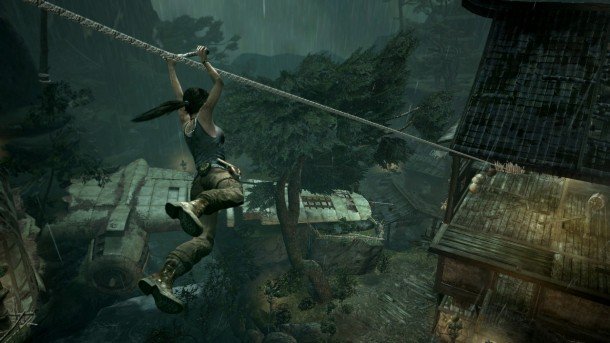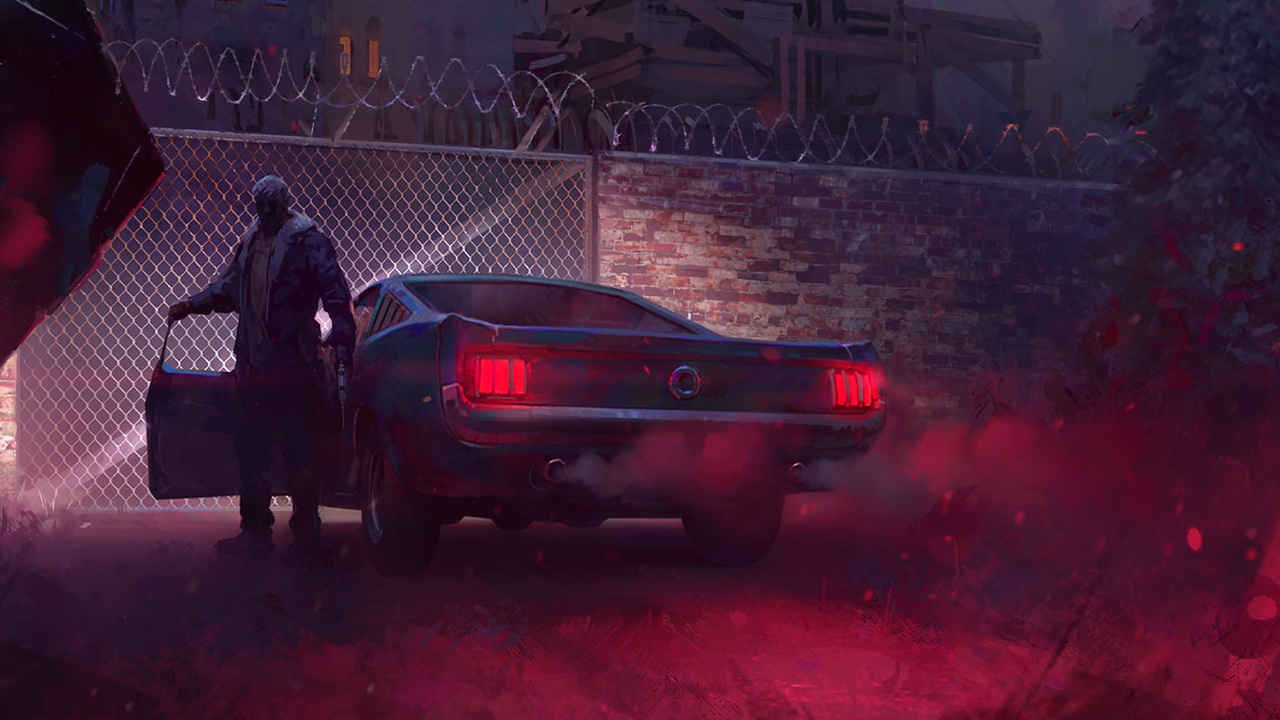Tomb Raider preview

I'm only fifteen minutes into my preview session, but Lara Croft is already balancing on a tree trunk wedged perilously between cliff faces. I've just navigated a crumbling underground cave network and emerged on a cliff overlooking an ocean. Violent waves are crashing on the rocks below and historical ships lay in ruins at the cliff face, acting as bleak evidence that no one leaves this island alive. If I fall from my trunk we'll be crushed between the waves and rocks.
It's a tense moment. Or it is, until I realise that it's hard to actually tumble off the trunk. Feeling audacious, I push the analog stick on my controller as hard as I can, but this indelicacy goes unpunished. Lara continues on her way with no evidence of lost balance.
Tomb Raider is definitely a reboot, then. It's a narrative-driven action adventure game, and from what I've seen in the game's first two hours, it's not at all taxing. Pacing and presentation often stands in for interactivity, in a fashion blatantly reminiscent of Sony's Uncharted series. The first cave network I traverse - before I emerge onto the cliff face - encapsulates the experience: a sprinkling of lite platforming, some puzzle solving, and the fending off of predators via QTE prompts.

Fending off predators takes on a new meaning later of course, as soon as Lara gets a gun. Lara's first kill is one of the most talked about video game moments of the year: an attempt by devs Crystal Dynamics to lend emotional weight to a gameplay loop involving shooting lots of generic dudes in their face. Tomb Raider's opening feels like a long buildup to this event, as Lara learns how to hunt deer and upgrade her gear. In one instance, Lara needs to open a door, thus she needs to craft a stronger climbing axe with which to wedge it open. Naturally, she must kill a bunch of animals to strengthen said climbing axe.
After her first human murder though, the result of a kill-or-be-killed encounter, Lara barely flinches at the prospect of murdering foes en masse. Speaking to Tomb Raider's art director Brian Horton, it's clear there's an inherent difficulty balancing gameplay with character depth. “In video games, the mechanic, or the idea of using killing as part of a gameplay loop, has been part of video games forever,” he says. “It's just something that we've grown accustomed to.
“But very few games put that importance and the weight of what killing a person means [into the game]. So the first kill for Lara had to mean something. It was something that she had to do, but she actually made a choice to do it, in a way. The player makes the choice.”
Keep up to date with the most important stories and the best deals, as picked by the PC Gamer team.

Shaun Prescott is the Australian editor of PC Gamer. With over ten years experience covering the games industry, his work has appeared on GamesRadar+, TechRadar, The Guardian, PLAY Magazine, the Sydney Morning Herald, and more. Specific interests include indie games, obscure Metroidvanias, speedrunning, experimental games and FPSs. He thinks Lulu by Metallica and Lou Reed is an all-time classic that will receive its due critical reappraisal one day.

